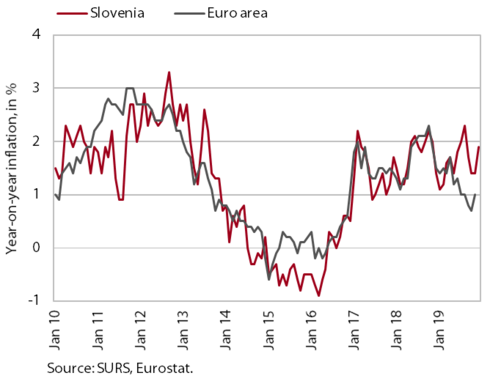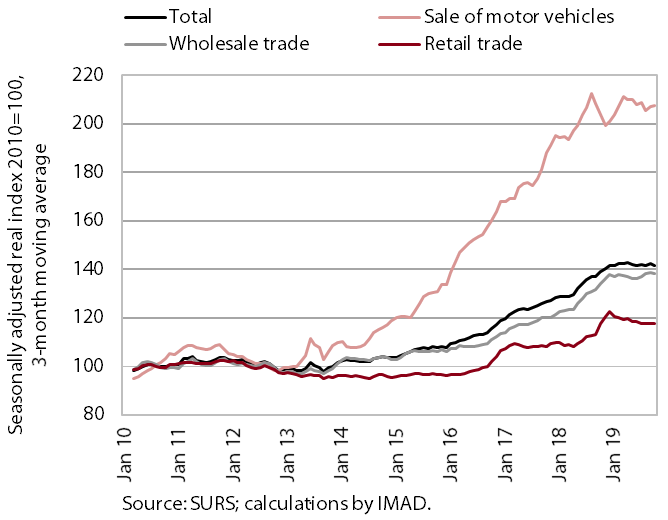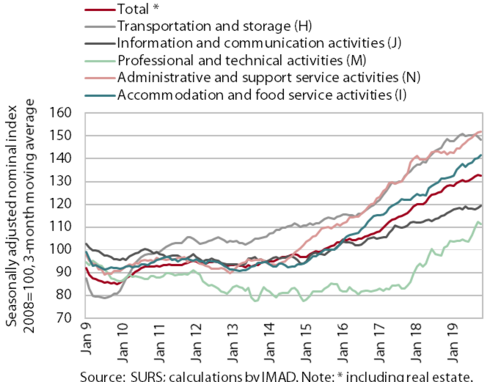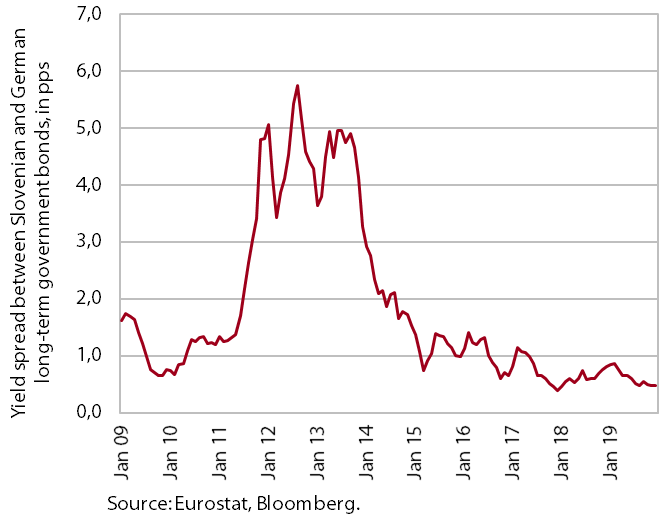Charts of the Week
Current economic trends from 23 December 2019 to 3 January 2020: prices, turnover in trade, market services and bond yields
In December, year-on-year price growth approached 2% mainly due to accelerated growth in food prices. In 2019 (until October) turnover in trade remained similar to that at the beginning of the year. Turnover growth in market services slowed in October as a consequence of lower turnover in professional, technical and most transport activities. Increased uncertainties in the euro area contributed to a moderate increase in the yields to maturity of government bonds in the last quarter of 2019.
Prices, December 2019

Year-on-year price growth rose in 2019 and was 0.5 pps higher than one year earlier. The contribution of goods prices increased, largely owing to higher food prices at the end of the year. Prices of semi-durable goods were also somewhat higher, while prices of durable goods dropped further. Growth in prices of services eased towards the end of the year, but was still twice as high as growth in prices of goods. Prices of services related to housing and hotels and restaurants continue to rise rapidly.
Turnover in trade, October 2019

October’s turnover in trade was at the level seen at the beginning of the year. In retail trade, which is otherwise marked by significant fluctuations in the sale of automotive fuels, only the sales of non-durable non-food products have been rising moderately amid further growth in household consumption. Turnover in wholesale trade was similar to that at the beginning of 2019, partly as a consequence of a moderation of growth in some related activities (transportation, construction, manufacturing). Until October 2019, turnover was also slowing in the sales of motor vehicles, after strong growth in the previous four years.
Market services, October 2019

Turnover growth in market services stopped at the beginning of the last quarter of 2019. October recorded further strong growth in accommodation and food service activities, which arose mainly from the sale of food and beverages. Turnover growth in information and communication activities was driven by turnover in telecommunication services (which has otherwise been falling since the beginning of the year) and turnover in computer services (higher export turnover in particular). Turnover in administrative and support service activities maintained its high level from the last few months. In professional and technical activities, turnover declined, mainly due to a fall in architectural and engineering services. A more pronounced decline was recorded in most transportation activities, especially in air transport as a consequence of the airline bankruptcy.
Bond yields, Q4 2019

The yields to maturity of government bonds increased somewhat in the last quarter of 2019 but remained low. We estimate that this could be a consequence of increased uncertainties in the last quarter of 2019. In the last quarter, the yields to maturity of Slovenian bonds thus rose by slightly more than 10 basis points, to 0.13%, while the spread to the German bond remained at around 50 basis points.
